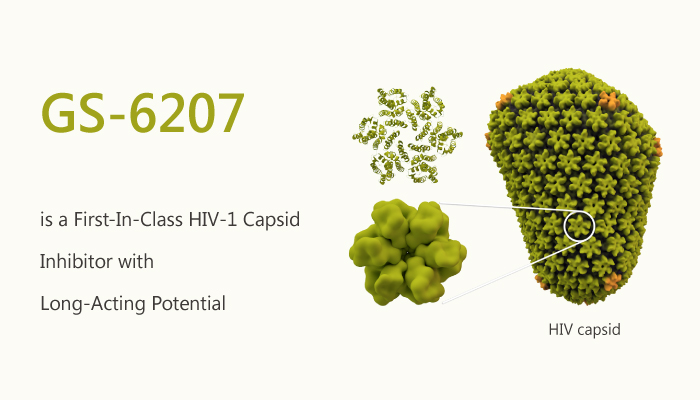Exceptional developments in combination antiretroviral therapy (cART) have transformed HIV/AIDS from a deadly pandemic to chronic and manageable disease. HIV-1 capsid (CA) has two structurally distinct domains, an N-terminal domain (CA-NTD) and a C-terminal domain (CA-CTD). They are connected by a flexible linker of ~5 residues. The structures of CA have revealed interactions between CA protomers in the form of hexameric and pentameric building blocks. The mature capsid core contains ~250 hexamers and 12 pentamers. Multiple steps of HIV replication involves the capsid core. Following the fusion of viral and cellular membranes, the capsid core enters the cytosol, where it undergoes controlled disassembly. Given the role of CA at multiple steps of viral replication, it is an attractive antiviral target, offering novel strategies for therapeutic intervention. In this study, GS-6207 is a first-in-class HIV-1 capsid (CA) inhibitor. It has greater potency than currently approved anti-HIV drugs.

GS-6207 is an analog of GS-CA1, also calls GS-CA2. It has unique structural features contributing to interactions with the capsid. GS-6207 displays anti-HIV activity in MT-4 cells with an EC50 of 100 pM, whereas in PBMCs, it displays a mean EC50 of 50 pM (20–160 pM) against 23 HIV-1 clinical isolates from different subtypes. In addition, studies in rats and dogs indicate that a single subcutaneous injection maintains GS-CA1 and GS-6207 plasma concentrations above the plasma-binding-adjusted effective concentration required for 95% HIV-1 replication inhibition for >12 weeks, indicating their potential as long-acting drugs. GS-6207 possibly interacts with CA.
In summary, GS-6207 is a first-in-class compounds with long-acting potential. GS-6207 has greater potency than currently approved anti-HIV drugs.
Reference:
Singh K, et al. Front Microbiol. 2019 Jun 20;10:1227.